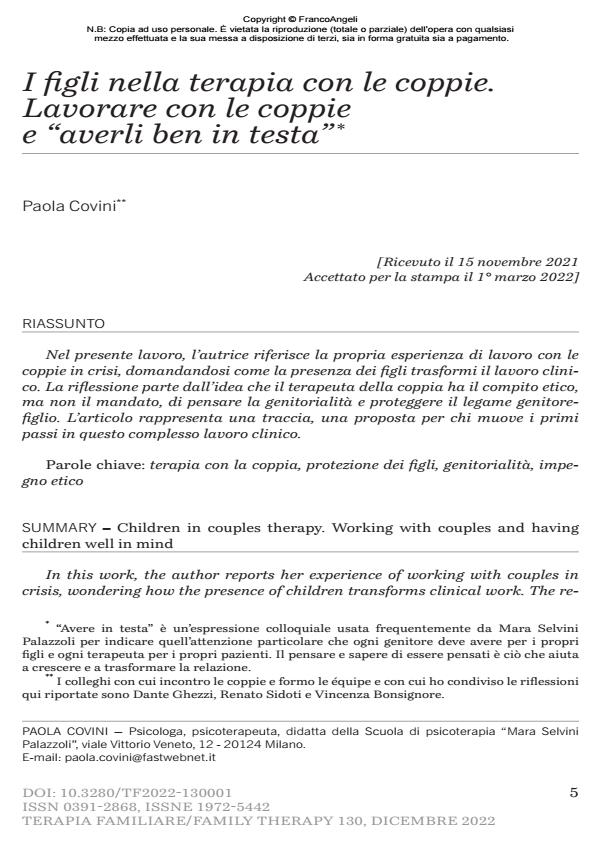Children in couples therapy. Working with couples and having children well in mind
Journal title TERAPIA FAMILIARE
Author/s Paola Covini
Publishing Year 2023 Issue 2022/130
Language Italian Pages 15 P. 5-19 File size 657 KB
DOI 10.3280/TF2022-130001
DOI is like a bar code for intellectual property: to have more infomation
click here
Below, you can see the article first page
If you want to buy this article in PDF format, you can do it, following the instructions to buy download credits

FrancoAngeli is member of Publishers International Linking Association, Inc (PILA), a not-for-profit association which run the CrossRef service enabling links to and from online scholarly content.
In this work, the author reports her experience of working with couples in crisis, wondering how the presence of children transforms clinical work. The reflection starts from the idea that the couple’s therapist has the ethical task, but not the mandate, to think about parenting and protect the parent-child bond. The article represents a trace, a proposal for those who take their first steps in this complex clinical work.
Keywords: couple therapy, protection of children, parenting, ethical commitment.
Paola Covini, I figli nella terapia con le coppie. Lavorare con le coppie e "averli ben in testa" in "TERAPIA FAMILIARE" 130/2022, pp 5-19, DOI: 10.3280/TF2022-130001